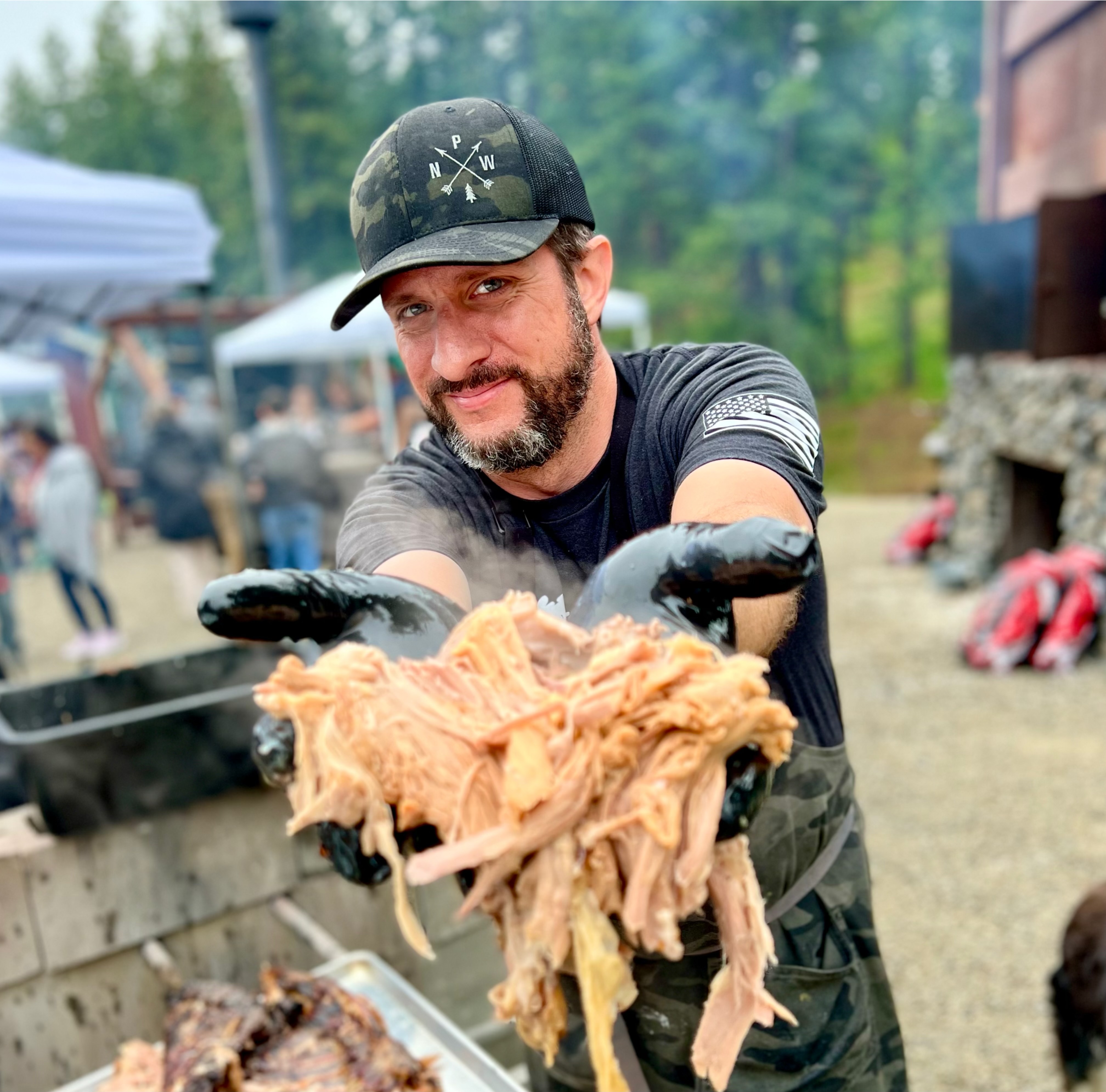
This post is sponsored by Omaha Steaks and contains affiliate links. The FCC makes me say this for some reason.
If you’re reading this blog post, chances are very high that you’ve had a ribeye steak before. You’ve probably come here because you’re curious of what an Omaha Cut ribeye steak is compared to a regular ribeye. And there’s a chance you’re wanting to learn of different methods on how to cook a ribeye steak (and/or steaks in general). I’ll tackle these topics and get you to the recipe as quick as I can type.
What is an Omaha Cut Ribeye anyway?

Plain and simple, the Omaha Cut comes from the center of the ribeye. Your average ribeye is made up of three parts: the spinalis dorsi (aka- ribeye cap), longissimus dorsi (center area, makes up the majority of the cut), and the complexus. The Omaha Cut ribeye comes from the longissimus dorsi area. The folks at Omaha Steaks, cut it round and thicker, similar in size to a top of the line filet mignon. But it tastes and bites just like a ribeye, which has a unique, extraordinary flavor!
My favorite way to cook a steak
If you’ve read the other steak posts on my blog, such as the one where I cook up tomahawk ribeyes, you’ll notice that I like to reverse sear in a cast iron skillet. The reverse sear method is when you slow cook the steak first, then finish it off with a hot sear.

Steak Prep
When prepping the Omaha Cut ribeye steaks, keep the seasonings simple: four parts kosher salt, two parts ground black pepper, and one part garlic powder. I go light-to-moderate with the amount I put on the steaks. That’s because I want the natural flavor of the beef to stand out. Get the grill preheated to 225 degrees over indirect heat with either hickory or pecan wood. Once up to temperature, put the seasoned steaks on and cook until about 120 degrees internal temp.

Searing time!
Remove the steaks to rest on a cutting board. Get direct heat on a cast iron skillet to searing temps, which start at 500 degrees. Season the cast iron with avocado oil because it has a higher burn rate than most cooking oils. I like to throw a sprig or two of rosemary and a couple of cloves of garlic in there to impart a little aroma and flavor to it. Place the ribeye steaks on the cast iron and sear for 1-2 minutes on each side. Since the Omaha Cut is thick, give a few seconds to searing the sides, too.
Rest then slice
Remove the steak and let it rest before slicing. It is wise to rest the steak for about 10 minutes because A) the carry over heat will cook the steak a few degrees internally and B) the meat builds up juices as it starts to cool and will give you more flavor in the meat. Slice up and savor every juicy bite!
The recipe!

Omaha Cut Ribeye Steak
The Omaha Cut ribeye steak is a unique cut to Omaha Steaks. It comes from the center cut of the ribeye and is done thicker than usual. These steaks have a look of a filet mignon and that recognizable flavor the ribeye provides. Reverse sear, rest, and enjoy!
Ingredients
- 4 Omaha Cut ribeye steaks (6 oz each)
- 2 Tablespoons kosher salt
- 1 Tablespoon ground black pepper
- 2 teaspoons garlic powder
- 1 Tablespoon avocado oil
- 2 sprigs rosemary
- 2 cloves garlic
- 2 Tablespoons butter
Instructions
- Preheat grill to 225 degrees on indirect heat, using hickory or pecan wood. In a small bowl, mix kosher salt, ground black pepper, and garlic powder. Sprinkle on all sides of the steaks. Place steaks on grill until internal heat reaches 120 degrees.
- On a separate grill (or burner), get cast iron up to searing temps. Put avocado oil in skillet, along with rosemary and garlic cloves. Sear 60-90 seconds on each side. Remove and rest for 10 minutes before slicing.
Notes
1. Substitute garlic butter for regular butter if you want that extra garlic flavor.
2. If you don't have a grill or smoker, feel free to low cook in oven and then sear on the stove.
Nutrition Information:
Yield: 4 steaks Serving Size: 6 ozAmount Per Serving: Calories: 400Total Fat: 34gSaturated Fat: 16gTrans Fat: 2.3gCholesterol: 200mgSodium: 120mgCarbohydrates: 0gProtein: 32g
Nutrition information isn’t always accurate.



